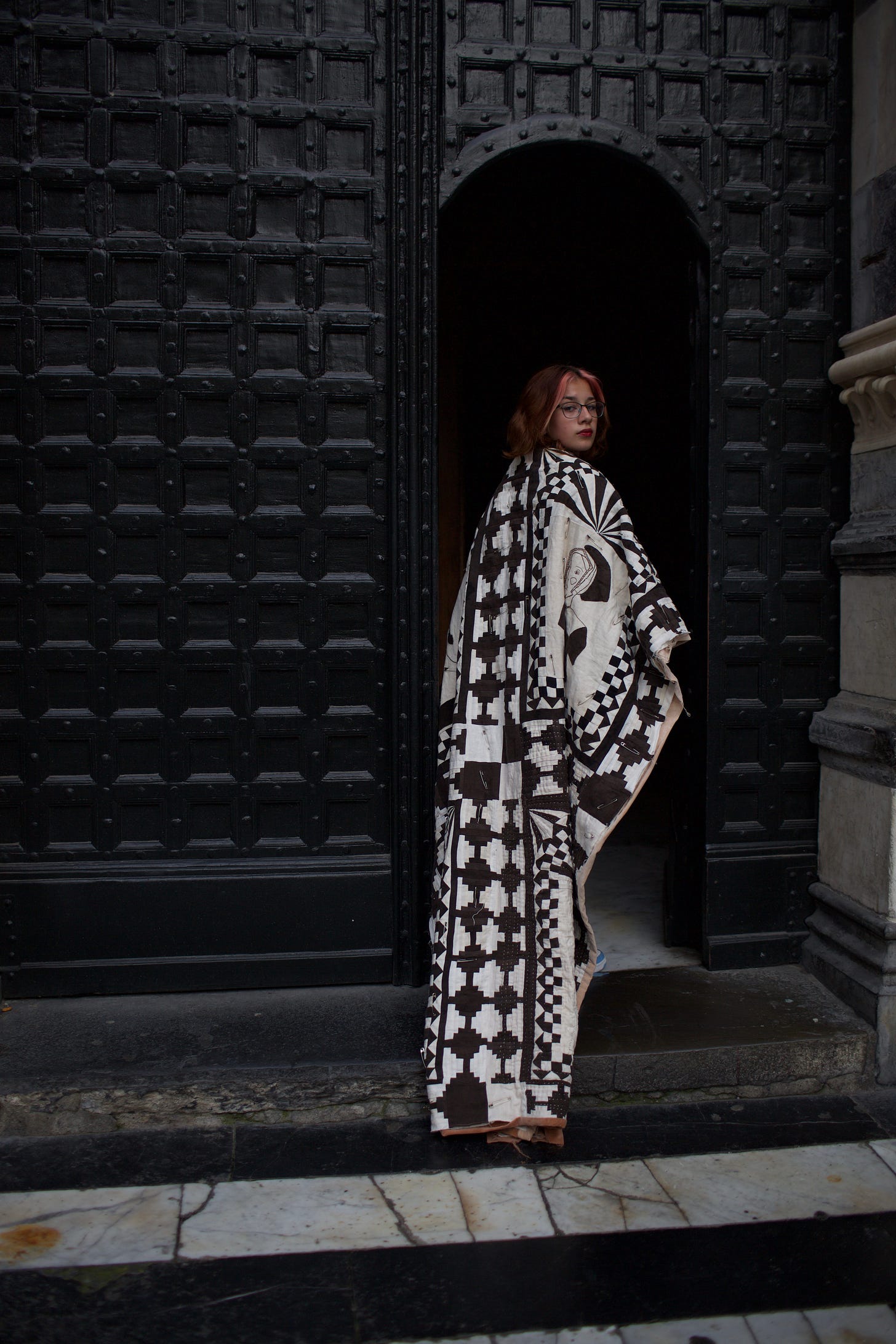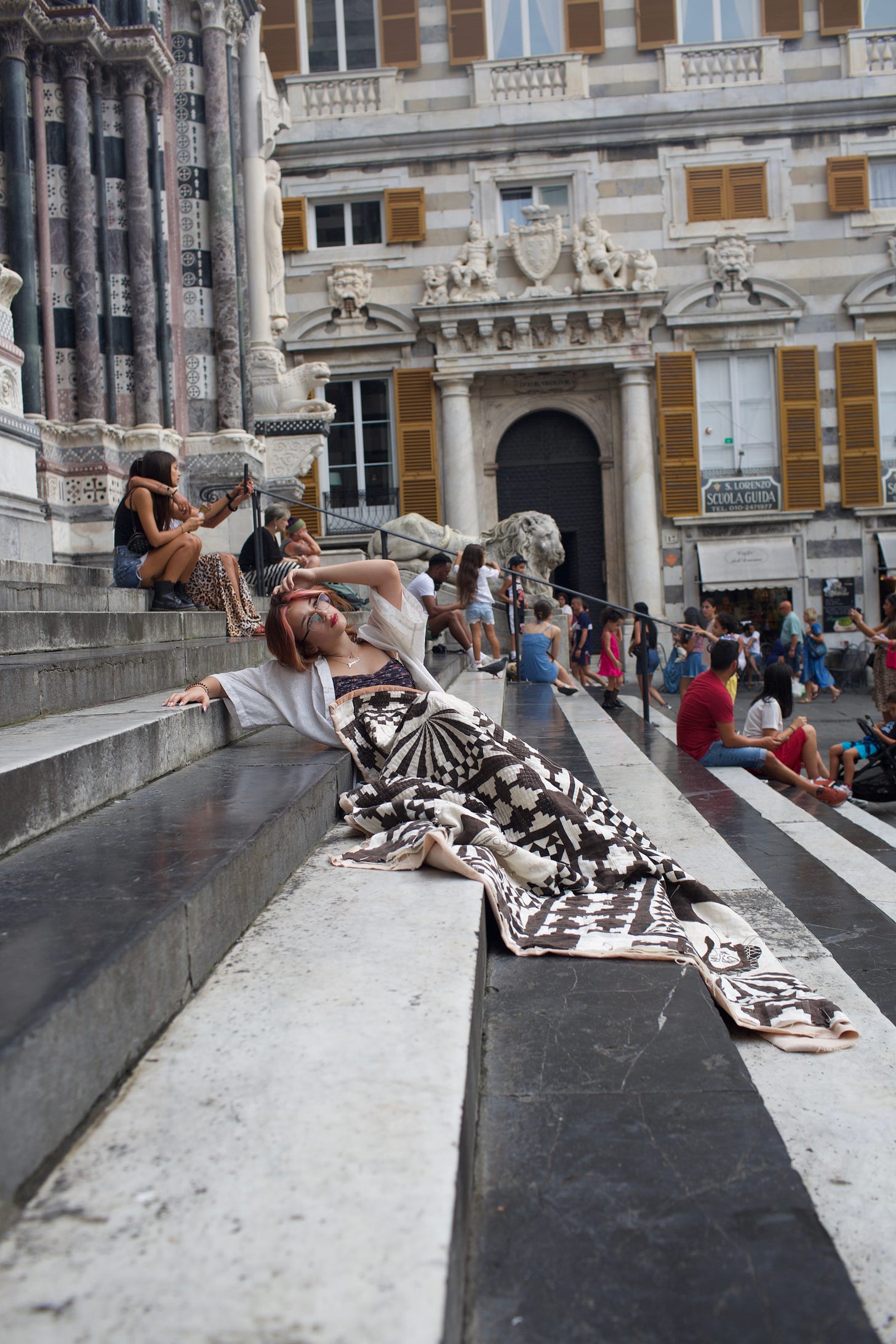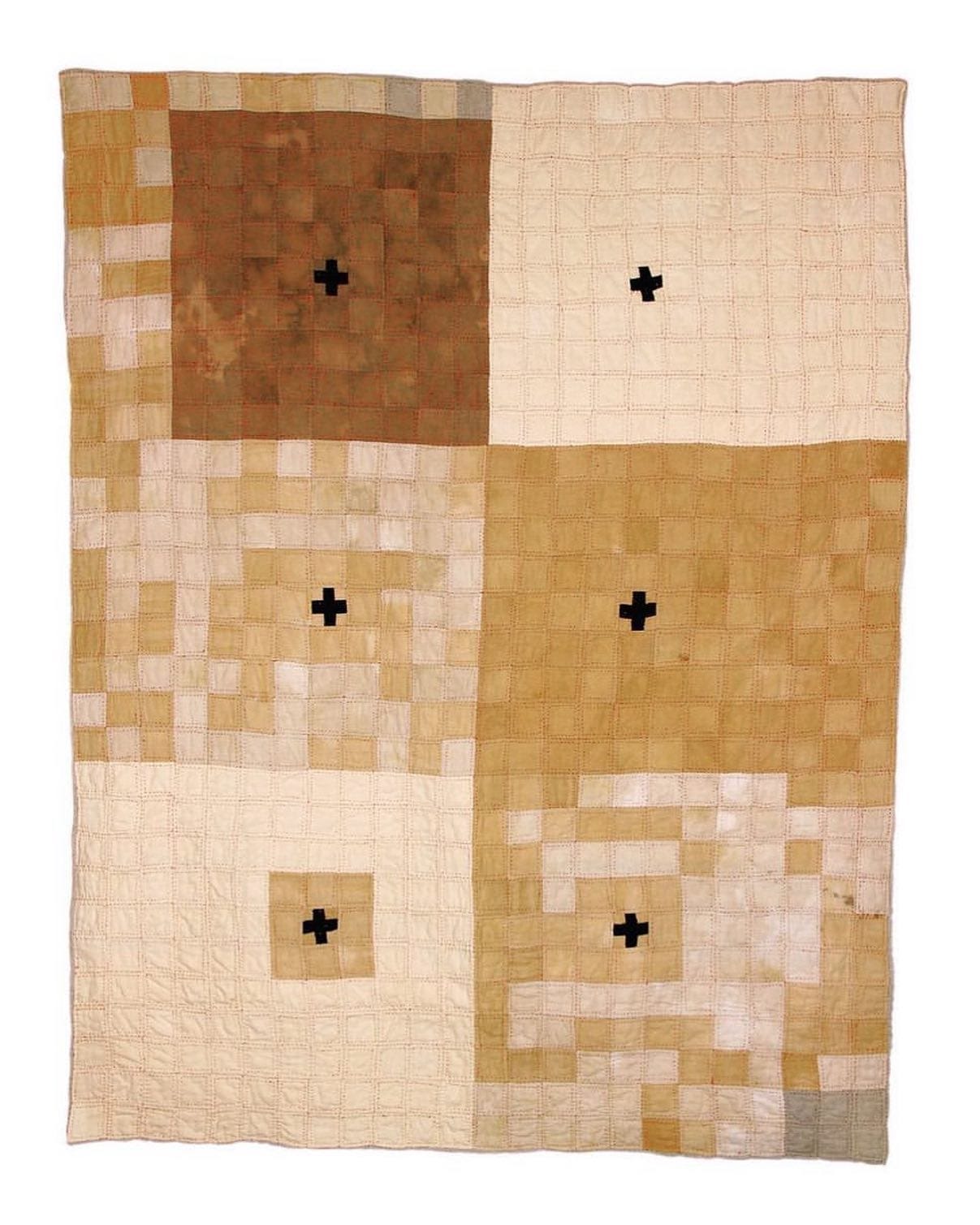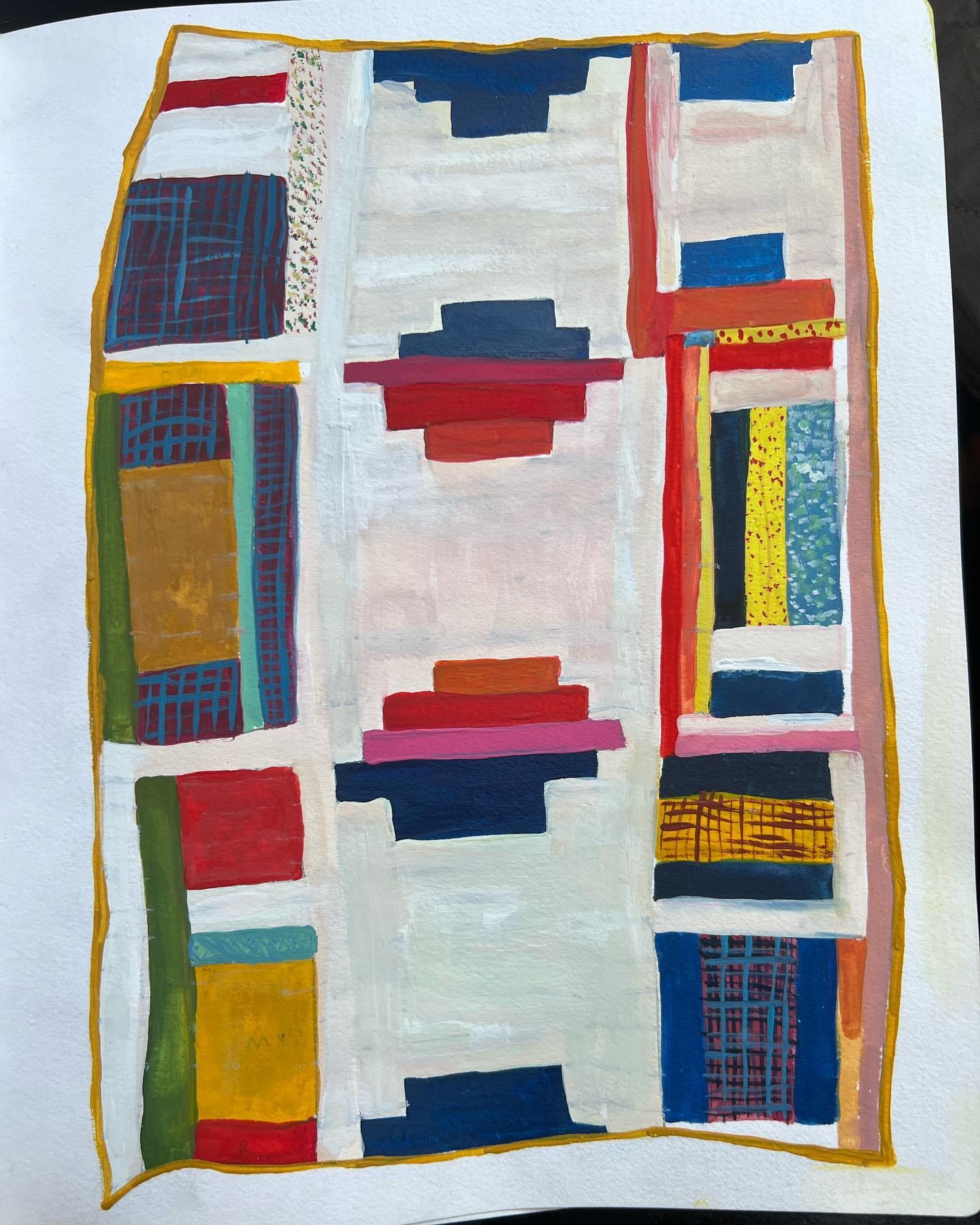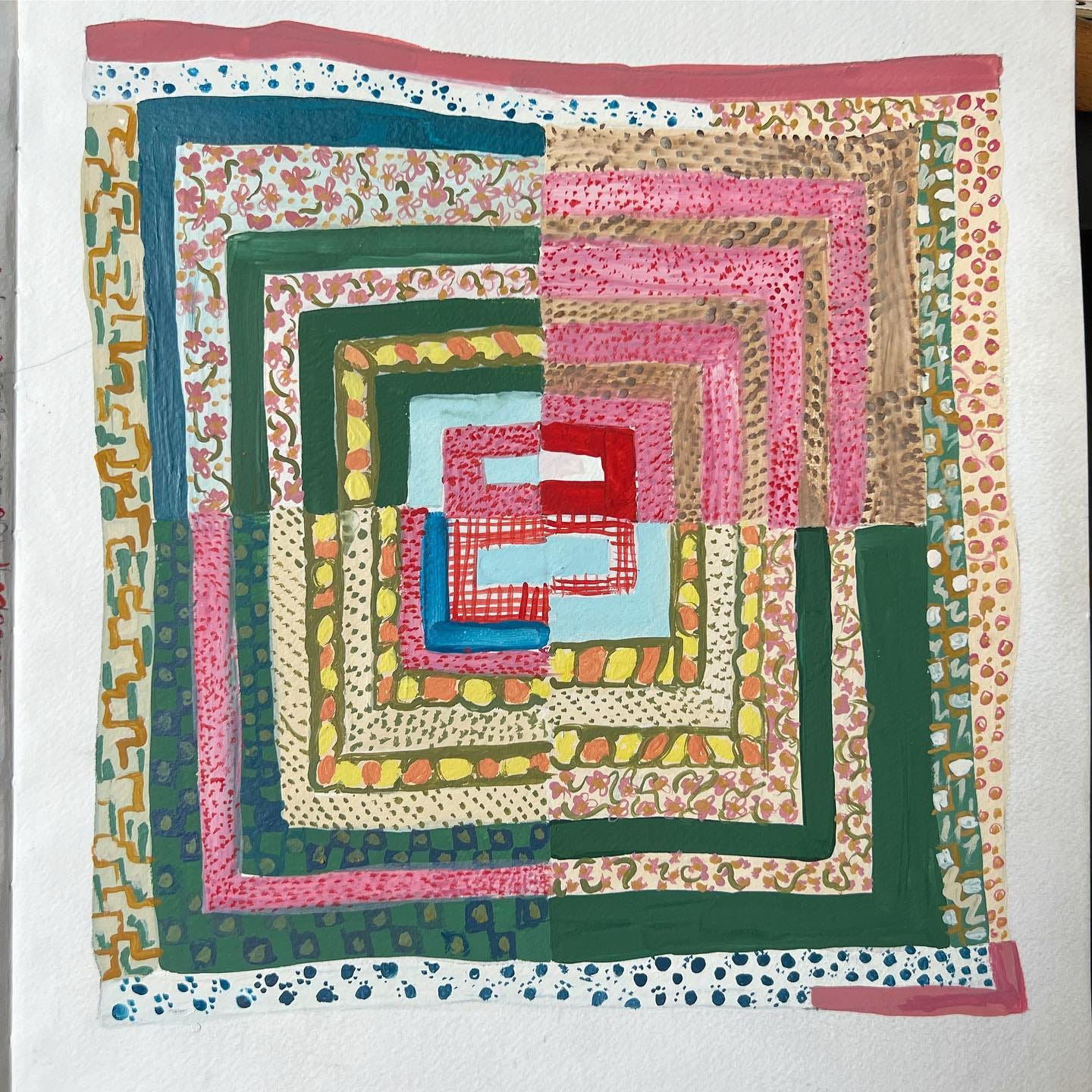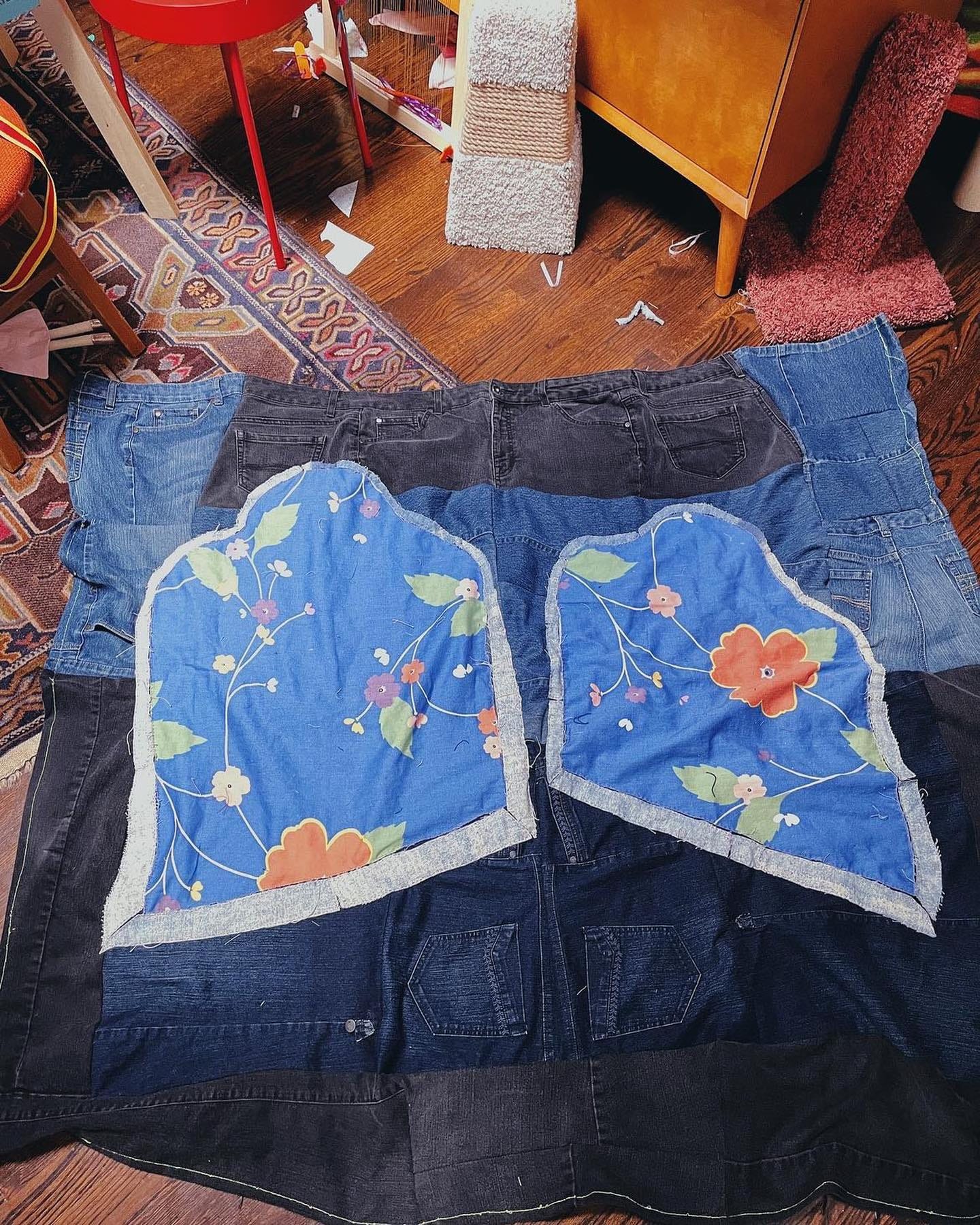

Discover more from Pelican Quilts
The word critique sounds negative. Like you are ready to pick something apart with an attitude. A haters’ clever words to tear the work down. I love art critique though. For me it has nothing to do with pointing out the flaws, but a practice of expanding what I can see. To practice critique is to train the eyes to see more. A critic is a lover, a noticer, someone who can describe art in ways that open the work up for others to see, enjoy, and appreciate. It’s a playful process of looking. Critique is using language to open the eyes.
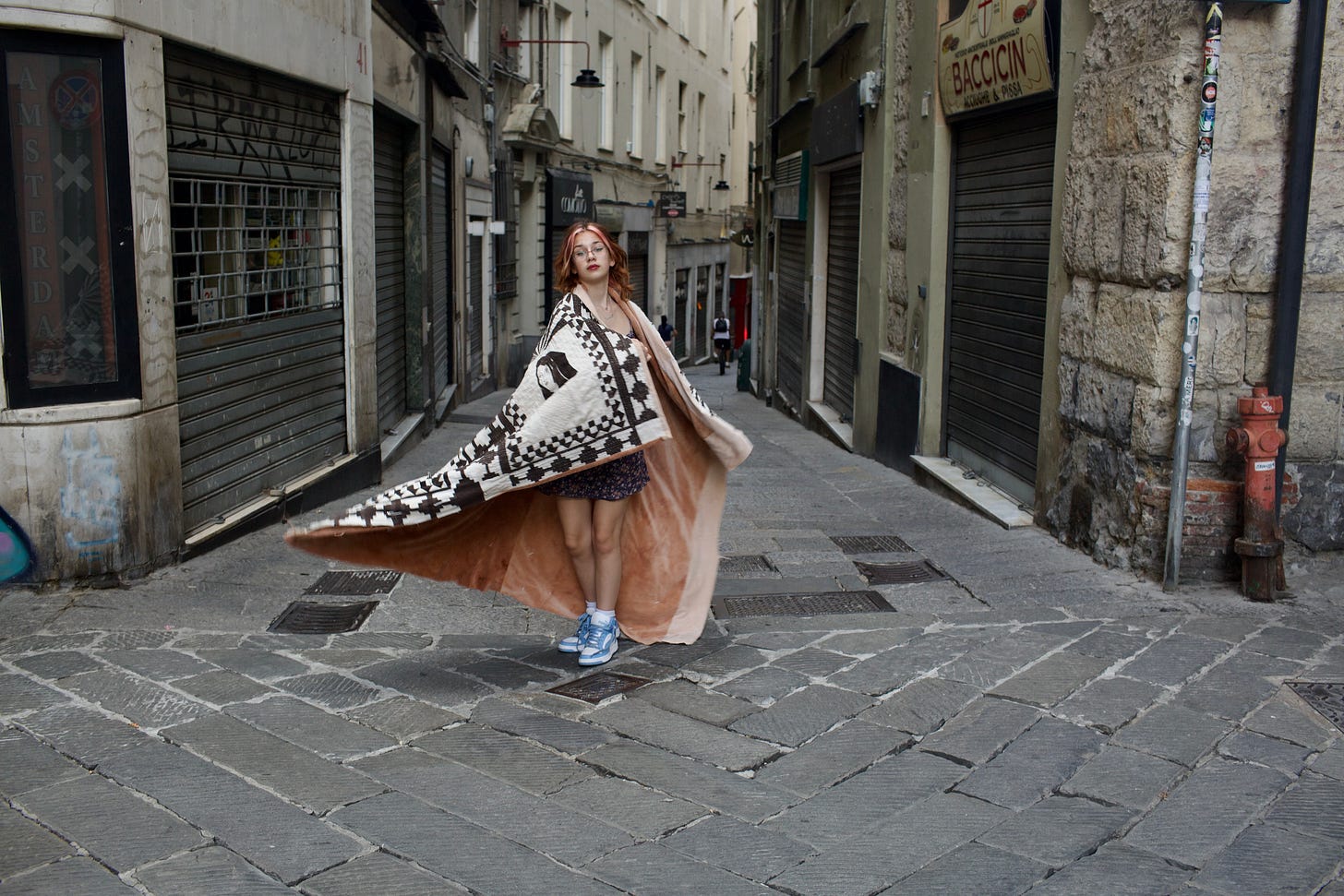
Art requires interpretation so your personal feelings play a part. While it isn’t about removing bias to become more objective, the subjective side is more powerful when you hold it back initially. The first steps in the critique slow that reaction down in order to see more of what you are looking at to expand the viewport.
I prefer an approach that focuses first on the form. It can be useful to look at external elements - the community and historical influences on the work - but I always like to start with what is there in front of me.
I started writing short quilt critiques as part of my practice when I started quilting. It has helped me see possibilities in making my own quilts.
How to Critique Quilts: A Simple Guide
This is not a step by step guide, nor do I fill this out exhaustively. The first to steps are all about describing the quilt itself. The second half is focused on interpreting and evaluating. In this later section I express my own reactions. There are 2 key phases. First is describing and analyzing and then is interpreting and evaluating.
Describe What You See
Start with the basics: Find the name of the quilt, who made it, when it was made, and what materials were used.
Look closely: What’s in the quilt? Notice the colors, patterns, shapes, and textures. Can you identify the block or pattern that was used? Find the names of the blocks. You can look through quilt libraries, describe them into internet searches or ask people on social networks.
Analyze the Details
Elements of quilting: Check out the use of color, fabric choices, stitching, and overall design. What special techniques are used? Did the quilter hold to or break the norms of quilting? Some quilters focus on seam alignment and symmetry, perfect points. Others don’t pay any attention to this.
Design principles: Look at how the quilt is balanced, the contrasts, where your eye is drawn to, and how everything fits together. What color relationships are used in the quilt? These can be opposite, tertiary, primary colors, muted colors, high contrast, low constant, monochrome, etc. The more words you can find the better.
Composition: How are the pieces arranged? Is there a central motif or focal point?
Interpret What It Means
Dig into the message: What do you think the quilter is saying? What emotions or ideas come through?
Context matters: Think about when and where the quilt was made. How does this influence what it means? What traditions influenced this quilt? What community or genre does this quilt fit into (either all the way or partially? Are there historical influences that you are aware of in this piece?
Personal reaction: How does the quilt make you feel? What memories or thoughts does it bring up? What surprised you about this composition or quilt?
Evaluate Its Success
Effectiveness: Did the quilter get their message across? Why or why not?
Craftsmanship: How well is it made? Are the techniques and materials used skillfully?
Comparisons: How does this quilt stack up against other quilts by the same quilter or in the same style?
Here are a few quilts that I have written about.
Dear Earth, by Judith Martin
@judithemartin posted with permission
Dear earth. Dear mother. This poem of a quilt with its repetitions, with its six verses, each connected but each rambling down it’s own highway of thought.
This nine-patch that harkens toward the ground. The dirt is everywhere in this piece. No afterthought even though I wiped the dirt off my feet. Or I tried to. Judith collected a piece of dirt from each corner and build this world for us.
These six breasts. Mother Earth. Each one muddled with its own story and history. Reminds me of my own young breasts that later became women’s. Later became fountains. Reminds me of @jhopestein poem “A newborn rests her head on the earth of mother. Everything else is outer space."
The quilt and the breast always seem so connected to me. It’s our first separation from our mother. The quilt is the first planet we visit after her earthy body.
This quilt struck me immediately with a quality of unearthliness. A quality of the divine. So I was surprised and delighted when I read the name. Like a tether it pulled me back again to set my feet on the ground.
Gouache painting of quilt by Deborah Pettway Young
Two sided nine block log cabin variation with Roman stripes. 1960. Painted 2022.
The courthouse steps log cabin variation is pushed to the limit.
This quilt is particularly interesting to examine because the blocks are not immediately obvious. The middle three blocks are clearly courthouse steps variation of the log cabin block. The top right is also easily one. The color way of the middle right is very different from these, but the form is also courtnhouse steps. I can also see the middle left as a courthouse steps block. I don't see it clearly in the top left, bottom left or bottom right. Though if you call the courthouse steps a stack of middle blocks that grow outwork in a symmetrical way, I could see the left two (top and bottom) falling into that. The bottom right block is kind of a Roman Stripes block, with some additional borders. Im not sure. This quilter seems so bold in her approach to these blocks. It’s not for lack of skill, but a playful approach to fabrics.
The use of white through the center of this quilt creates a rich creamy backdrop to the colors that seem to be moving through the center lane. While the colors are not all primary colors, there is a strong showing of red, yellow, and blue. The heavy use of white lets these bold colors breath and dance through the quilt.
Housetop fractures medallion variation
by Delia Bennett. 1955. Painted by me July 30, 2022.
This quilt is a four block house-top variation of the log cabin block. The house-top variation was developed in the Gees Bends quilting community. The traditional log-cabin block used formal colors of a red center block with a light color on one side and a dark color on the opposite time. The housetop variation mixes the dark and light colors with every other strip all the way across. Then often four blocks are used to create concentric circles like in this quilt. This quilt is composed of fabrics from old clothes with a large mix of pattern. There is a strong showing of pink and green with highlights of blue and yellow. The red center motif call back to the traditional red center of the log cabin that symbolized the hearth of the home.
I’ve been thinking about why these housetop variations get me so deeply and I think there is something to the way a home that appears fractured can feel so full of beauty. The idea of the “normal” household is just that - an idea. One we have to wrestle with and contend with. But these “normals don’t exist in reality. My nephew recently looked at our extended family who were all eating a meal together and he said “our family isn’t normal, is it?” I wanted to hear what idea of normal he had in his mind. I’m still drawing strength enough to find the beauty in my own fractured family. There are many losses in these fractures but maybe the loss of being normal is the one that is the one I come back to most often. Oh but the beauty is here. It’s a true home with the cracks and dents.
Jennifer Bastian. WIP 2022.
This quilt by Jennifer Bastian fits into a genre of quilts called bereavement quilts.
Jennifer shared that she is making this quilt in response to the death of a woman she was very close to - one she called her “second mother.” This quilt is made from clothing left behind after her death. Jennifer’s work is deeply sentimental and fully of color and textiles that are imbued with nostalgia for childhood. Watching her make this quilt as a process of grieving this huge loss in her life is incredibly moving.
The primary color of the quilt is blue and black - the blue from the denim jeans that makes up the backdrop of the quilt. There are two bright orange flowers on patterned fabric right at the center of the quilt. The beautiful color story of orange and blue are lovely opposite colors. Blue functions as a neutral here and could fit with so many colors in so many rooms but will probably end up with Jennifer’s color saturated home.
There is something pragmatic about a bereavement quilt. What to do with all these special clothes that remain? In an era and culture that has been drained of cultural mourning practices, this kind of ritual feels urgent to me. Freud wrote an important essay titled “Meloncholia and Mourning” where he claimed that the act of mourning is not an automatic process but one that has to be actively engaged. Throughout history, collective cultures have provided these rituals for their communities. In our contemporary era these have been largely lost. It’s strikes me again how urgent our need for these practices are. The depression that ensues after a loss is one where the mourner joins the dead unable to live with loss, they join the world of the death in a type of half life. Bereavement quilts may be a ritual that we need to invest in as a wide cultural practice. A mourning quilt that magically brings us back to life.
Jennifer’s quilt is a work in process, as I imagine her work of grief will be for sometime. Are these two flora gravestones appliquéd upon a sea of denim seats helping her understand what she has lost with the loss of this maternal figure? Maybe they are angel wings representing the continuing spiritual presence of this mother in her life.
The image of a child standing behind a mother, small hand slipping into the back pocket, pulling, asking for attention sprung to mind. I love that the back pockets were chosen here for this quilt. It reminds me of the perspective of a child, ass high to their mother.




